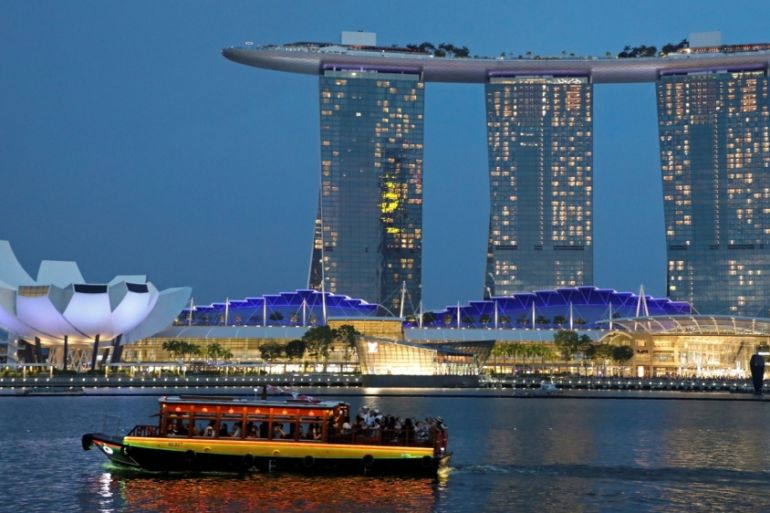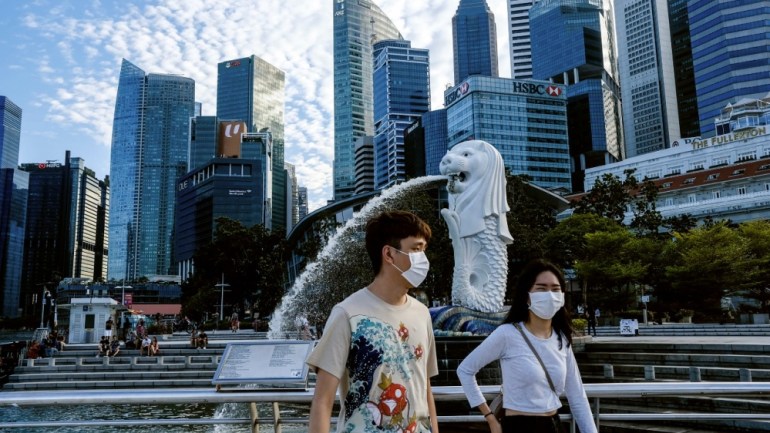Singapore’s recovery from its worst recession proves to be patchy
The Southeast Asian trading hub’s economy shrank by 5.8 percent in 2020, with recovery expected to be gradual.

Singapore marked its worst-ever recession in 2020 due to the COVID-19 pandemic, although the contraction moderated in the fourth quarter as the country lifted more coronavirus-related curbs, putting the economy on path to a slow and patchy recovery.
The Southeast Asian financial and transport hub was hit hard last year by local virus-related restrictions, border closures around the world and a sluggish global economy.
Keep reading
list of 4 itemsVaccine hesitancy stirs in nearly COVID-free Singapore
Singapore confirms first case of new COVID variant found in UK
End of the line: Malaysia, Singapore kill high-speed rail project
The bellwether economy shrank by 5.8 percent in 2020, preliminary data showed on Monday, slightly better than the official forecast for a contraction of between 6.5 percent and 6 percent. The government has previously said it expects gross domestic product (GDP) to grow by 4 percent to 6 percent this year.
The city state has eased most of its coronavirus rules, although its borders remain largely shut. It began its COVID-19 inoculation programme last week and the government is keen to open more of the economy with the help of the vaccine in a country dependent on travel and trade.
“Recovery going forward in 2021 will probably continue to be quite gradual,” said Barclays regional economist Brian Tan. “And a lot of it will depend on the speed at which the government can distribute the COVID vaccines and whether or not this can allow us to reopen the borders more quickly.”
But some analysts were more optimistic about Singapore’s economic outlook.
“A key thing to note is that the advanced estimate is based on the first two months of the quarter and is frequently subject to large revisions,” Alex Holmes, Asia economist at research firm Capital Economics, wrote in a research note sent to Al Jazeera.

“Strong improvements in manufacturing [purchasing managers indexes] and trade data elsewhere in the region suggest that, after the inclusion of December data, the estimates of Q4 and 2020 Singapore GDP will be revised up,” Holmes wrote.
GDP contracted by 3.8 percent in October-December compared with the same period in 2019, the Ministry of Trade and Industry said in a statement, an improvement over the 5.6 percent year-on-year drop in the third quarter. Economists polled by Reuters had expected a decline of 4.5 percent, according to the median of their forecasts.
Stable but uneven
GDP grew 2.1 percent on a quarter-on-quarter seasonally adjusted basis in October-December, slowing from the 9.5 percent expansion in the third quarter.
The Singapore dollar edged up to 1.3203 per United States dollar, its highest since April 2018, after the data was released.
Prime Minister Lee Hsien Loong said last week that while the economy was seeing signs of stabilisation, the recovery will be uneven and activity is likely to remain below pre-COVID-19 levels for some time.
The Singapore government has spent about 100 billion Singapore dollars ($75.45bn) or 20 percent of its GDP, on virus-related relief to support households and businesses.
The central bank left monetary policy unchanged at its last meeting in October and said its accommodative stance would remain appropriate for some time.
“We don’t expect any changes in the monetary policy for now,” said Jeff Ng, senior treasury strategist at HL Bank. “The main bulk will still remain in fiscal policy in order to support the economy to recovery in 2021.”